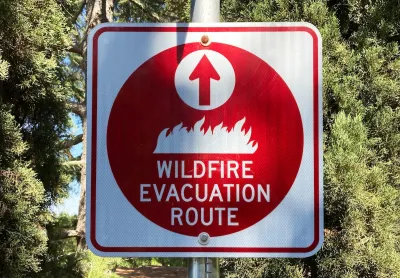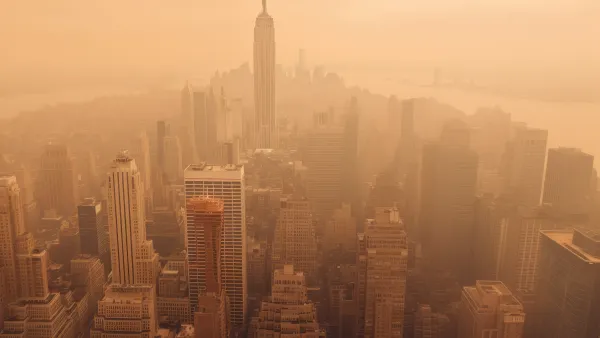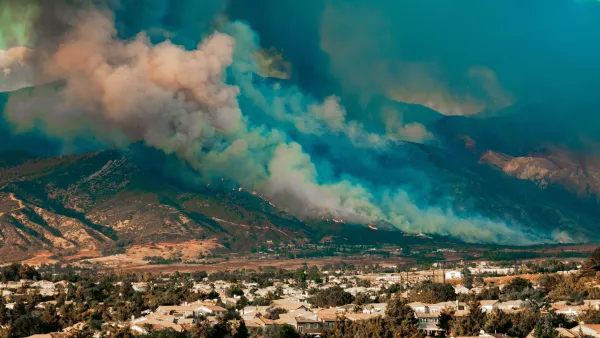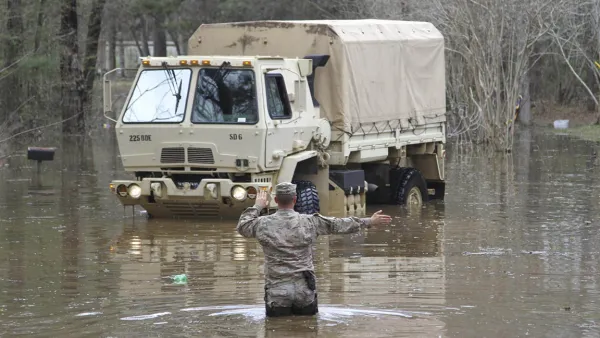Researchers are working to understand how people behave during wildfire events and how to most effectively get people to safety during deadly fires.

In a piece for Wired, Aarian Marshall describes the growing field of wildlife evacuation research, which is becoming a more crucial piece of cities’ emergency plans as wildfires become more destructive and unpredictable.
When evacuations go wrong, they really go wrong. In LA’s Pacific Palisades neighborhood, panicked drivers stuck in traffic abandoned their vehicles in the middle of evacuation routes, leaving emergency crews unable to reach the fires. Authorities used bulldozers to push empty cars out of the way.”
Researchers are working to understand how people respond to evacuations and how to most effectively get key information across in emergency situations. “The research thus far suggests that reactions to wildfires, and whether people choose to stay, go, or just wait around for a while, can be determined by a bunch of things: whether residents have been through wildfire warnings before, and whether those warnings were followed by actual threats; how the emergency is being communicated to them; and how the neighbors around them react.”
While some residents who have experienced fires before are more likely to stay, others are more likely to evacuate. Lower-income people are less likely to flee, most likely due to reduced access to transportation and lodging. According to Marshall, “It’s a faint silver lining, that the horror Californians experienced this week might produce important findings that will help others avoid the worst in the future.”
FULL STORY: The Evolving (and Inexact) Science of Wildfire Evacuation

National Parks Layoffs Will Cause Communities to Lose Billions
Thousands of essential park workers were laid off this week, just before the busy spring break season.

Retro-silient?: America’s First “Eco-burb,” The Woodlands Turns 50
A master-planned community north of Houston offers lessons on green infrastructure and resilient design, but falls short of its founder’s lofty affordability and walkability goals.

Delivering for America Plan Will Downgrade Mail Service in at Least 49.5 Percent of Zip Codes
Republican and Democrat lawmakers criticize the plan for its disproportionate negative impact on rural communities.

Test News Post 1
This is a summary

Test News Headline 46
Test for the image on the front page.

Balancing Bombs and Butterflies: How the National Guard Protects a Rare Species
The National Guard at Fort Indiantown Gap uses GIS technology and land management strategies to balance military training with conservation efforts, ensuring the survival of the rare eastern regal fritillary butterfly.
Urban Design for Planners 1: Software Tools
This six-course series explores essential urban design concepts using open source software and equips planners with the tools they need to participate fully in the urban design process.
Planning for Universal Design
Learn the tools for implementing Universal Design in planning regulations.
EMC Planning Group, Inc.
Planetizen
Planetizen
Mpact (formerly Rail~Volution)
Great Falls Development Authority, Inc.
HUDs Office of Policy Development and Research
NYU Wagner Graduate School of Public Service





























